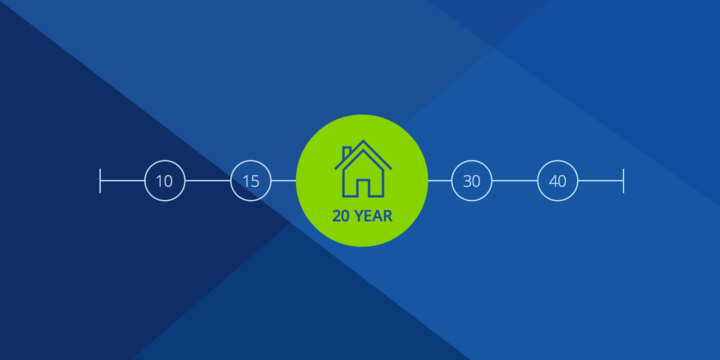Underwriting: What It Is and How to Navigate the Process


Written by Tali Bendzak on June 29, 2023
What is underwriting?
Underwriting is the process mortgage lenders use to analyze a loan application and determine the amount of risk involved. It includes a review of the potential borrower’s credit history and an assessment of the property’s value.
Manual underwriting vs automated underwriting
After completing your mortgage application, the underwriting process begins and it can be done two different ways: via a computerized review or by a human, who is called an underwriter. In most cases, the process will begin with an automated review and then finish with a lightweight human assessment. Manual underwriting alone is typically reserved for borrowers with more complex financial histories. During both processes, the goal is to analyze your application and determine whether you qualify for a loan.
Automated underwriting system
An automated underwriting system (called an AUS) uses technology to assess the information in your application, then access publicly available data to quickly determine whether your loan should be pre-approved.
Automatic underwriting is the preferred method for underwriting because of its speed, but it also eliminates concerns over discrimination or biases that can occur with human reviews. Zillow Home Loans begins with an automated underwriting system like most lenders.
Manual underwriting
Manual underwriting is the process in which a professional underwriter analyzes your financial information to determine if you qualify for a loan. In most cases, this happens after an initial automated underwriting assessment. But certain financial circumstances may call for manual underwriting alone. These circumstances can include a prospective home buyer lacking credit history, previously experiencing bankruptcy or foreclosure, or taking out a jumbo loan. If your application raises any red flags at the beginning, your underwriter will opt to manually underwrite the loan, which is a lengthier review.
How long does underwriting take?
Underwriting a loan can take a couple of days or a couple of weeks, depending on your application and whether it requires a manual or automated review. It’s one piece of the larger closing process, which typically takes 30-45 days.
There are a few factors that can extend the time it takes to complete underwriting. If your application is missing documentation or you are slow to respond to questions, the process can take longer. If you’re self-employed, your lender will require more detailed earnings information from you and more time to review the extra paperwork.
What does an underwriter do?
An underwriter’s job is to thoroughly review your loan application, verify financial documents, fill qualification gaps and then approve or deny you for a mortgage. During underwriting, they will flag any missing information, verify your earnest money deposit and start the title review and appraisal process.
If the underwriter finds gaps in your application or needs additional information, they’ll have the loan reviewer, also known as the loan processor, reach out to you. As the borrower, you’ll never talk to the underwriter directly.
Here are some specific tasks the underwriter takes on:
Review application
The underwriter reviews not only your application, but all the other documentation you provided, including your credit report, tax returns, pay stubs and proof of funds. They’ll also review property details, like the home’s value and annual taxes to incorporate the cost into your monthly affordability. This step is designed to ensure they have a full picture of your financial situation.
Flag missing financial information
Your underwriter will flag missing information from your application and identify anything that requires additional documentation or clarification.
Verify earnest money
They will also verify the source of your earnest money to ensure it isn’t owed to another party, like a family member. Any loan will impact your overall debt.
Verify income
The underwriter will review 30-60 days of pay stubs, as well as your bank statements, to ensure you have the amount of steady income required to make your monthly mortgage payments.
Review title
The loan processor will kick off the title review process, where your lender ensures there are no liens on the property you intend to buy or any other red flags with ownership. The underwriter reviews these records provided by the title company.
Review appraisal
If your loan requires an appraisal to confirm the property’s value, the requirement is established during automated underwriting, then ordered by the loan processor. The underwriter reviews the appraisal.
Determine loan approval
Most importantly, the underwriter determines if your loan is approved. There are four possible outcomes of the underwriting process.
Conditional approval: After reviewing your application, the underwriter will request any additional information and conclude that the loan has been conditionally approved. This means that it has passed the initial underwriting phase and as long as you meet the outstanding requests or conditions, the loan will be officially approved. Some of the most common requests are things like updated pay stubs or submitting a letter about the source of a financial gift.
Loan approval: When all conditions are met and the underwriter is satisfied, they’ll officially declare you “clear to close.” That means you can proceed to closing and purchase your new home–as long as the title, signing and funding all go as planned.
Suspended approval: If the underwriter isn’t satisfied with your responses or was unable to fully verify your application, your application will be paused due to lack of information. It doesn’t mean you’re denied. Rather, it means that until you provide the necessary documents and information, the underwriting can’t move forward. This commonly happens if an underwriter can’t verify your employment or income.
Denied approval: If the underwriter determines your application doesn’t meet the criteria for approval, your application will be denied. Common causes for denial are insufficient income, too much debt, low FICO scores or inconsistent employment.
What does an underwriter look for?
When an underwriter is reviewing a loan application, here are some data points they look for in order to ensure potential borrowers are low risk.
Healthy DTI ratio
A debt-to-income ratio (DTI) is a calculation that underwriters use to make sure you have enough income to pay your debts every month — including your new mortgage. It’s a ratio of your monthly debt obligations against your income, and a DTI of 36% of less is ideal. Some lenders allow for a DTI as high as 50% and a few will go even higher.
Acceptable LTV ratio
Another calculation underwriters focus on is a loan-to-value ratio (LTV). This compares your proposed loan amount to the value of the property. A lower LTV is better, with most lenders considering 80% or less to be ideal. The higher your down payment, the lower your loan amount — and the lower your LTV.
Healthy credit and FICO scores
A low credit score is a red flag to underwriters that you may be a high-risk borrower. If your credit report shows any delinquent payments on other lines of credit, past bankruptcies or past foreclosures, your application will be subject to increased scrutiny.
Any history of overspending
Your bank statements will be reviewed for signs of overspending, like overdrafts, non-sufficient funds charges and bounced or returned checks.
Any inconsistencies in your income
While they’re reviewing your bank statements your underwriter will also be on the lookout for any irregular or large deposits that might signal that someone has loaned you money for your down payment or to inflate your financial portfolio. Lenders are focused on whether you’ll be expected to pay that money back. Mortgage transactions have also been used by criminals as a means of illegally laundering money. Lenders and underwriters are required to look for any evidence of such criminal financial activity.
Consistent employment
Your underwriter will review your employment history on your application to look for any employment gaps or frequent job changes that may suggest a struggle to maintain consistent income. They may also call your current employer to confirm you currently work there.
What happens during the underwriting process?
The underwriting process starts when you submit your loan application and ends when it is officially approved. Here are the major steps your underwriter will take along the way.
- The lender passes your completed application to their underwriting team
- The underwriter reviews application documents
- The underwriter verifies income, assets, debts and earnest money deposits
- The underwriter involves the title company for full review
- The underwriter conditionally approves the loan, which prompts a loan processor to get involved
- The loan processor works with the borrower to gather any necessary documentation or additional information the underwriter has requested, called “conditions”
- The processor verifies your employment
- The processor checks your social security number for fraud
- The processor passes completed conditions back to the underwriter
- The underwriter reviews and determines approval or denial
- If your loan is approved, the processor sends closing disclosures to borrower
- The processor passes approved loan portfolio to closing department; the title company will take over the next steps to coordinate closing
What to do during underwriting
During the underwriting process, you may feel like you’re doing a lot of waiting. But there are several things you can do to speed the process along.
Respond quickly: When your loan processor reaches out for more information, gather the required information and send it in as quickly as possible.
Gather even hard-to-find documents: Some requests may be harder to track down, but it’s important you contact the necessary parties to surface the required records.
Be prepared with common documents: This includes the last two years of W-2s, last 30 days of pay stubs, last 30 days of other income (like alimony or child support) and last 60 days of bank statements. If anything changes during the underwriting period or if it takes longer than 30 days, be prepared to provide updated documents.
Provide letters of explanation: In some cases, you may be asked to provide a letter of explanation for something in your application. You can ask your lender for a template to save time.
What not to do during underwriting
While you’re waiting on the underwriting decision, there are a few things you shouldn’t do.
Don’t make any major purchases: Big-ticket items affect your savings and overall balance sheet that’s being reviewed by your underwriter.
Don’t take on any new debt: Don’t buy a new car or open a new credit card while you’re in the midst of applying for a mortgage. You don’t want anything to negatively impact your credit score.
Don’t leave your job: If you lose or quit your job, you may no longer have the income required to gain approval.
Underwriting by loan type
All types of mortgages go through a similar underwriting process, yet some types require a few extra steps.
Conventional and FHA loans: These popular loan programs follow the general underwriting process described above.
USDA loans: These loans, which are designed for buyers in rural areas, require an additional analysis related to restrictions of the use of the property and geographic location.
VA loans: Since they’re only available to military service members and veterans, VA loans require an eligibility review.
How much home can you afford?
At Zillow Home Loans, we can pre-qualify you in as little as 5 minutes, with no impact to your credit score.
Zillow Home Loans, NMLS # 10287. Equal Housing Lender
Get pre-qualifiedHow much home can you afford?
See what's in reach with low down payment options, no hidden fees and step-by-step guidance from us at
Zillow Home Loans.
Zillow Home Loans, NMLS # 10287. Equal Housing Lender
Calculate your BuyAbility℠



